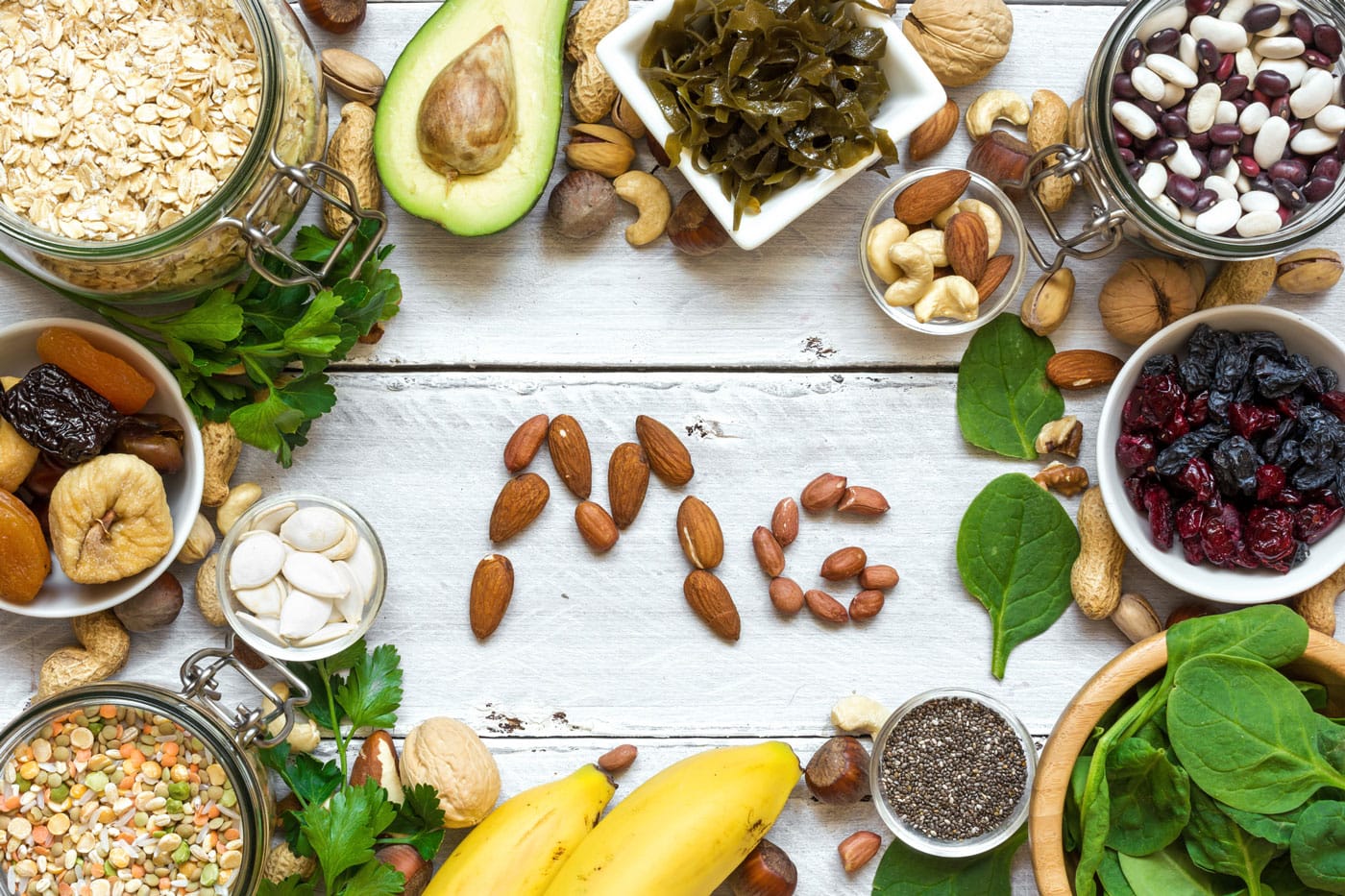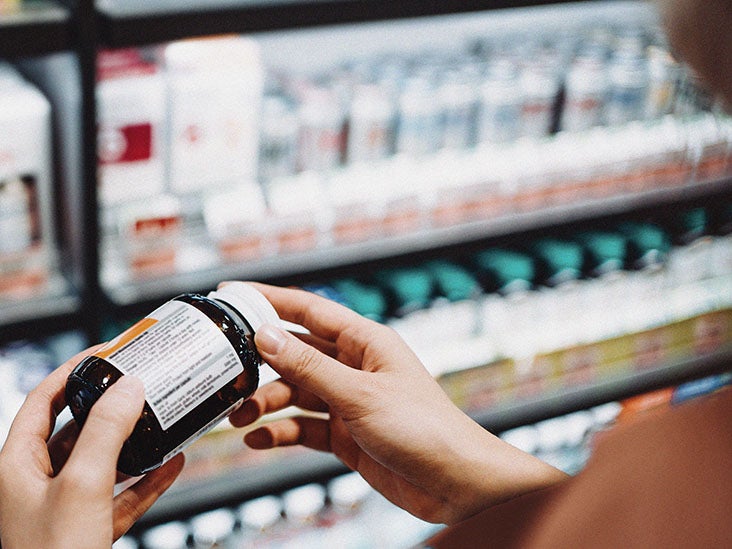Magnesium is found in a variety of nutrient-dense foods, including whole grains, nuts, seeds, legumes, and several fruits and vegetables.
Magnesium is an extremely important mineral.
It’s involved in hundreds of chemical reactions in your body and helps you maintain good health, but many people don’t reach the Daily Value (DV) of 420 milligrams (mg) (
Yet, you can easily meet your daily needs by eating foods high in magnesium.
1. Dark Chocolate
Dark chocolate is as nutritious as it is flavorful.
It’s very rich in magnesium, with 65 mg in a 1-ounce (oz.), or 28-gram (g), serving, which is about 15% of the DV (
2. Avocados
The avocado is an incredibly nutritious fruit and a tasty source of magnesium. One medium avocado provides 58 mg of magnesium, which is 14% of the DV (
3. Nuts
Nuts are nutritious and tasty.
Types of nuts that are particularly high in magnesium include almonds, cashews, and Brazil nuts.
For instance, a 1-oz. (28-g) serving of cashews contains 83 mg of magnesium, or 20% of the DV (
Most nuts are also a good source of fiber and monounsaturated fat and have been shown to improve blood sugar and cholesterol levels in people with diabetes (
Brazil nuts are also extremely high in selenium. In fact, just one Brazil nut provides nearly 175% of the DV for this mineral (
4. Legumes
Legumes are a family of nutrient-dense plants that include lentils, beans, chickpeas, peas, and soybeans.
They’re very rich in many different nutrients, including magnesium.
For instance, a 1-cup (172-g) serving of cooked black beans contains an impressive 120 mg of magnesium, which is 29% of the DV (
5. Tofu
Tofu is a staple food in vegetarian diets due to its high protein content. Made by pressing soybean milk into soft white curds, it’s also known as bean curd.
A 3.5-oz. (100-g) serving contains 35 mg of magnesium, which is 8% of the DV (
6. Seeds
Seeds are incredibly healthy.
Many varieties — including flax, pumpkin, and chia seeds — also contain high amounts of magnesium.
Pumpkin seeds are a particularly good source, with 168 mg in a 1-oz. (28-g) serving. This amounts to a whopping 40% of the DV for magnesium (
Grains include wheat, oats, and barley, as well as pseudocereals like buckwheat and quinoa.
Whole grains are excellent sources of many nutrients, including magnesium.
A 1-cup (168-g) serving of cooked buckwheat contains 86 mg of magnesium, which is 20% of the DV (
8. Some fatty fish
Fish, especially fatty fish, is incredibly nutritious.
Many types of fish are high in magnesium, including salmon, mackerel, and halibut.
In fact, a 3.5-oz. (100-g) serving of cooked salmon packs 30 mg of magnesium, which is 7% of the DV (
Bananas are among the most popular fruits in the world.
They’re most well-known for their high potassium content, which can lower blood pressure and is linked to a reduced risk of heart disease (
Plus, they’re also rich in magnesium, with 37 mg of magnesium, or 9% of the DV, in one large banana (
10. Leafy greens
Leafy greens are highly nutritious and many types are loaded with magnesium.
Leafy greens with significant amounts of magnesium include kale, spinach, collard greens, turnip greens, and mustard greens.
For instance, a 1-cup (180-g) serving of cooked spinach has 158 mg of magnesium, or 37% of the DV (
Other Magnesium-rich Foods
Tap, mineral, and bottled waters can also be sources of magnesium, but how much magnesium they contain depends on the brand.
You can get magnesium from the following foods.
The amount of magnesium that each food item has is shown in milligrams (mg):
- pumpkin seeds, 30g — 156mg - 37% DV
- chia seeds, 30g — 111mg - 26% DV
- almonds, 30g — 80mg - 19% DV
- spinach, boiled, ½ cup — 78mg - 18% DV
- cashews, 30g — 74mg - 17% DV
- peanuts, ¼ cup — 63mg - 15% DV
- soymilk, 1 cup — 61mg - 14% DV
- bread, whole wheat, 2 slices — 46mg - 11%DV
- avocado, cubed, 1 cup — 44mg - 10% DV
- rice, brown, cooked, ½ cup — 42mg - 10% DV
- rolled oats, cooked in unsalted water, 100g — 29mg - 7% DV
- milk, 1 cup — 24mg - 6% DV
If you have a high fat diet, you might absorb less magnesium from your food.
Should I take magnesium supplements?
People who are especially at risk of not getting enough magnesium are people with diseases like Crohn’s disease and coeliac disease, people with type 2 diabetes, older people and people who have alcoholism.
If you have a magnesium deficiency or certain health problems, your doctor may recommend you take a magnesium supplement. Health problems that can be helped by taking a magnesium supplement include constipation, indigestion, high blood pressure during pregnancy, magnesium deficiency, irregular heartbeat, and the risk of cerebral palsy in pregnancy.
You can’t get too much magnesium from your food, but it is important not to take more than the recommended dose of a magnesium supplement. Having too much magnesium from a supplement can cause diarrhoea, nausea, and stomach cramps.
Magnesium supplements can interfere with other medicines you may be taking, including antibiotics, diuretics, osteoporosis medication, and medicines for acid reflux or stomach ulcers. It’s always important to tell your doctor or pharmacist about any supplements or over the counter medicines you are taking.
Sources:
1. https://www.healthline.com/nutrition/10-foods-high-in-magnesium


